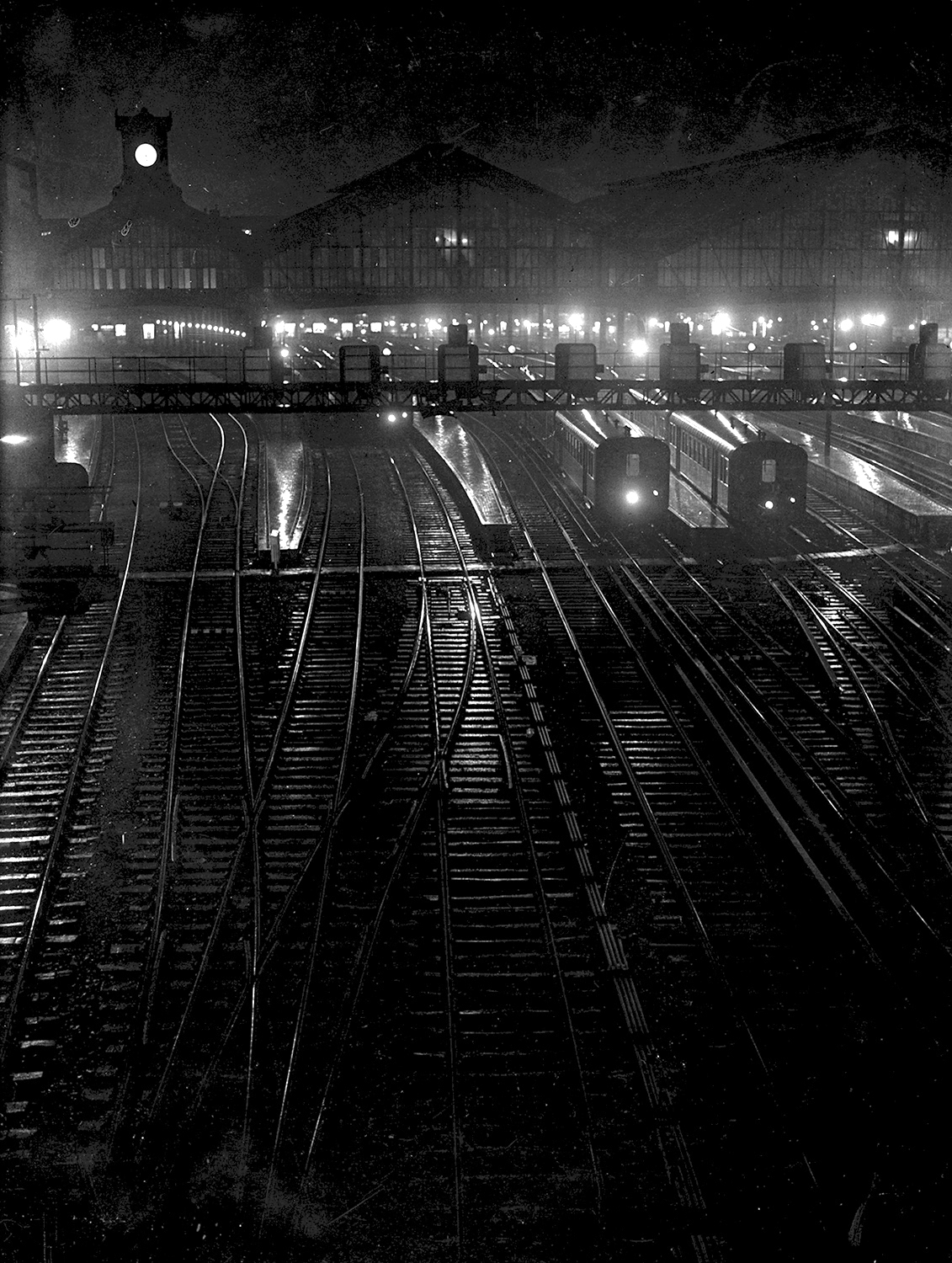
Brassai's Graffiti
Who but Brassaï could photograph a gentle ocean wave lapping the shore of the French Riviera and make it seem like a sensual manifesto, all foam and swirling water, glinting sun and tidal undulation? Like few others, this 20th-century master of the medium was, at his artistic core, a great miniaturist, capable of transforming the fleeting stuff of European life with deceptive ease, flair and the soul of a poet.
Born Gyula Halász in 1899 in Transylvania (then part of Hungary, now Romania), Brassaï got his start as a Berlin journalist in 1920, moved to Paris in 1924 and remained there the rest of his life. Under the tutelage of no less than fellow Hungarian André Kertész, Brassaï (a pseudonym which honors his birthplace, Brasso) became "the eye of Paris," as writer/friend Henry Miller called him. Now he lives on as the emblematic demimonde photographer, chronicling high and low Parisian life, its artist celebrities (Dali, Picasso, Matisse, Genet, Giacometti, the list goes on)--and, perhaps more importantly, its erotic essence.
By 1933, when he published his first book, "Paris de Nuit (Paris by Night)," which launched him toward global success, he could move comfortably between the worlds he--or, more precisely, his camera--inhabited. As one can glean from this photo exhibition, there were the countless street and domestic scenes in which Brassaï delighted: the storefront windows stocked with the ephemera of French culture--bottles, clocks, bicycle tires--along with the downscale strip shows, prostitutes posed in their knee-high boots on hotel beds, little dogs snuggled on blankets, sleeping vagrants, graffiti, and backdrops clogged with commercial signage.
At the same time, there was Brassaï the aesthete, whose access to French intellectuals and artists led to formal and informal portraiture of the Parisian salon scene that flourished between the great wars. And as a master of the studio, Brassaï had few peers. Just as casually as he could capture the seedy side of Paris, he could produce formal works of great power and elegance--for example, his strikingly posed nudes, bathed in supremely artful shadow, reclining on dark cushiony depths, inviting the lecherous gaze yet possessed of classical grace.
In any of its aspects, Brassaï's photography leads the viewer toward an intimacy with its subject matter, often through its feel for the incidentals: not only the random, richly familiar stuff of the storefronts but also the discernible gestures and postures that make us feel like we've chanced upon a scene along with the artist or, in the case of a woman half-clothed on a cheap bedspread, initiated it. Complicity is Brassaï's trump card, after all, as he brings to life a Paris that exists for some in gritty reality and for most of us in the legend and lore of the expatriates and Parisians with whom we dreamily identify, much as in Woody Allen's film, "Midnight in Paris," which invites us to time-travel back to Brassaï's heyday.
What shouldn't be forgotten as one glides around Paris and the Riviera through Brassaï's lens is that he is considerably more than just an artist of a particular era, and certainly more than the French version of his U.S. contemporary, Weegee. As this exhibition illustrates, Brassaï's attention to detail made him a seminal exponent of a photographic realism that would seed successive generations of artists, from American urbanists such as Callahan or Hines to post-modern randomists such as Friedlander or Eggleston. And Brassaï's rigorously erotic studio posings are an arguable influence on the distant lens of Robert Mapplethorpe. Ultimately, Brassaï's legacy is glimpsed wherever photography melds spontaneity with careful composition, whenever it crafts a scene of high and low occasion, and however it affirms the medium as a conveyor of sensibility, style and symbol with a single click of the shutter.
Exhibited and Sold By
Contemporary Works / Vintage Works, Ltd.
258 Inverness Circle
Chalfont, Pennsylvania 18914 USA
Contact Alex Novak and Marthe Smith
Email info@vintageworks.net
Phone +1-215-518-6962
Call for an Appointment














Share This